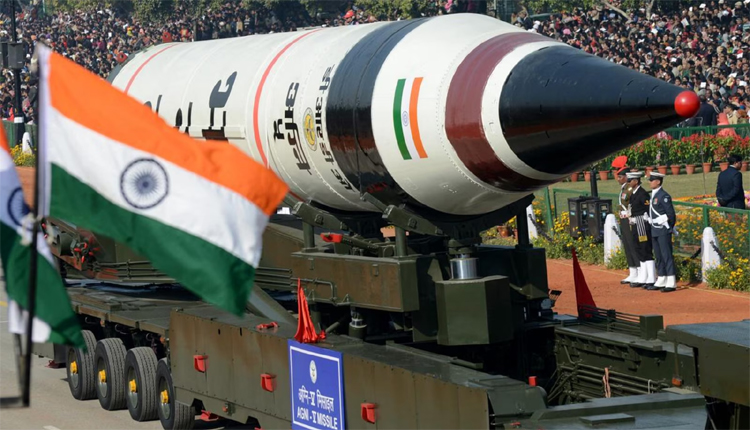- Agni-5 Variants to Deliver 7,500-kg Warheads, Targeting Fortified Underground Sites
- Hypersonic Precision: New Missiles to Fly at Mach 8–20 with CEP Under 10 Meters
- India Joins Elite Club of Bunker-Buster Powers Amid Rising Regional Threats
New Delhi: India’s Defence Research and Development Organisation (DRDO) is reportedly developing new variants of the 7,500-kg Agni-5 missile, which can be used as a bunker-buster warhead, to destroy enemy targets buried 100 meters below the ground.
The DRDO is currently upgrading the Agni-5 intercontinental ballistic missile, which it originally developed to carry nuclear payloads up to a range of 5,000-km. Its new versions will be used for deep-penetration strikes with conventional warheads, and they are due to be deployed by 2026, ڈان reported. They will drill through 80–100 meters of reinforced concrete or rock, penetrating fortifications such as bunker entrances, missile silos, and command centres. The project is in line with the U.S. employment of GBU-57 bunker-buster bombs on the Iranian Fordow nuclear facility on June 22, 2025.
The new variants, however, will have a lower range of 2,500 km owing to the heavier 7,500-kg warhead, whereas the nuclear Agni-5 has a much lower range. Flying at hypersonic speeds between Mach 8 and Mach 20, they would provide speed and precision in their strikes. One is an airburst warhead intended for surface targets and the other for deep underground targets. The missiles utilise advanced guidance systems, including NavIC, GPS, and a micro inertial navigation system as a backup, achieving a circular error probable (CEP) of less than 10 meters.
An official with the DRDO, speaking on background, told The Times of India: “The new Agni-5 variants from India will be on par with the best bunker-buster capabilities available in the world. The recent U.S. lack of deep-strike capabilities against fortified targets amid Israel-Iran conflicts drives this development. The other two top strategic threats are Pakistan and China, both of which have underground facilities close to the borders of India.
India’s missile modernisation is poised to enhance its conventional deterrence, as several countries, including the US, China, the UK, and Russia, operate similar weapons capable of delivering over 15 tonnes of payload to a depth of up to 300 meters, creating significant impacts; thus, India joins the elite club of nations that possess advanced ‘bunker-busting technology.’



Comments are closed.